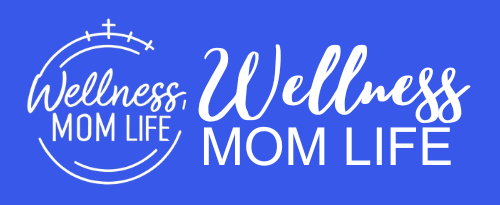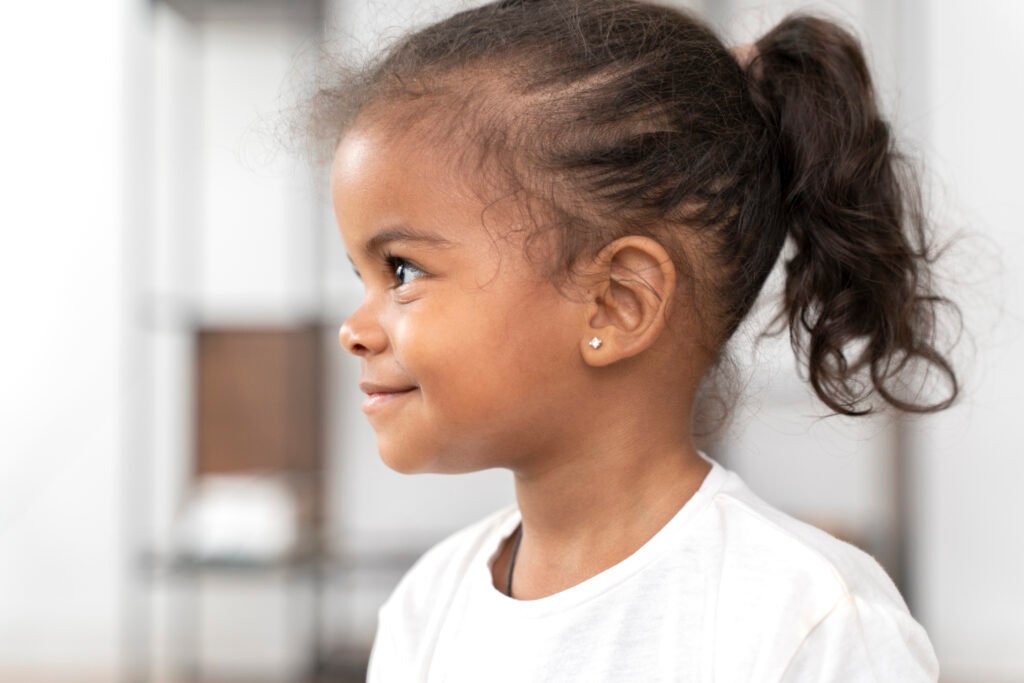Piercing your baby’s ears is a decision that comes with excitement and a little bit of anxiety. For many parents, ear piercing is a cherished tradition or simply a way to adorn their little ones with jewelry. However, the process also involves some important considerations to ensure it’s done safely and without unnecessary discomfort for your baby. If you’re thinking about ear piercing for your child, there are some precautions you should take, and some useful tips to follow to make the experience as smooth and safe as possible.
In this guide, we’ll walk you through five essential precautions and provide tips on safe baby ear piercing.
1. Choosing the right time for ear piercing
First-time parents often ask “When is the best time to pierce my baby’s ear”, there is no universal answer but these steps could assist you in making an informed decision on what and how to go about the process.
Pediatricians often suggest waiting until your baby is at least two months old. By this age, your baby has received their first set of vaccinations, which can protect against potential infections. However, some parents prefer to wait even longer, until their child is a bit older and more capable of caring for the piercings themselves. It’s important to remember that ear piercing is a personal choice and can be done at any time you feel comfortable. Whether you pierce your baby’s ears at a few months old or wait until they’re older, ensure you’re making the decision based on what’s best for your child and not just external pressure or tradition.
2. Choosing the Right Professional for Ear Piercing
When it comes to piercing your baby’s ears, who does it is just as important as when it’s done. Choosing a qualified and experienced professional goes a long way in making the procedure safe and hygienic.
Avoid using general jewelry stores or mall kiosks, where the person performing the piercing is not trained to carry out the procedure. Instead, look for a professional experienced in piercing babies’ ears. Many pediatricians offer ear-piercing services in their offices, which can be a great option because they’re familiar with your baby’s medical history and can provide a sterile environment. If you opt for a professional piercer, be sure they are reputable and follow strict hygiene protocols. They should use sterile, single-use equipment and gloves throughout the procedure. Don’t hesitate to ask about their experience with infant ear piercings, and ensure the environment is clean and child-friendly.
3. Sterile Equipment and Hypoallergenic Earrings: Non-Negotiables for Safe Ear Piercing
The tools and earrings used for piercing are critical to minimizing the risk of infection and ensuring a smooth healing process. Sterile equipment and hypoallergenic earrings should be non-negotiables.
Sterile Equipment
Ensure that the professional uses sterilized tools for the piercing. This usually involves a disposable, single-use needle or piercing gun that is opened in front of you. Sterilization is key to preventing infection, and this is one of the most common complications of ear piercing.
Hypoallergenic Earrings
When choosing earrings for your baby, opt for hypoallergenic materials such as surgical stainless steel, titanium, or 14k gold. These materials are less likely to cause an allergic reaction due to how sensitive a baby’s skin can be. Avoid earrings made from nickel or other alloys, which can cause irritation and prolong healing. Additionally, the earrings should have a smooth, flat backing that won’t poke or irritate your baby’s skin. Earrings with sharp edges or rough surfaces can cause discomfort and increase the risk of infection.
4. Post-Piercing Care: Ensuring Proper Healing
Once your baby’s ears are pierced, the next step is to ensure proper healing. Post-piercing care is preventing infections while ensuring the ears heal quickly and comfortably.
Cleaning the Piercings
You’ll need to clean the pierced area twice a day with a saline solution or an antiseptic recommended by your pediatrician. Be gentle, and avoid using alcohol or hydrogen peroxide, as these can dry out the skin and slow the healing process.
Handling the Earrings:
Handle the earrings with clean hands to avoid introducing bacteria to the newly pierced ears. Rotate the earrings gently a few times daily to ensure they don’t get stuck to the skin and to help the piercing heal evenly. However, be careful not to twist them too much, as this can irritate them.
Avoiding Irritants:
Keep your baby’s ears dry and avoid exposing them to irritants like shampoo, lotion, or pool water during healing. Also, be mindful of your baby’s activities—if they are at an age where they might tug at their ears, consider placing a hat or headband over the pierced ears to prevent accidental pulling or contamination. The typical healing time for an ear piercing is about six weeks, but it can vary depending on the individual. During this time, monitor the pierced area for signs of infection, such as redness, swelling, or discharge. If you notice any of these symptoms, consult your pediatrician immediately.
5. Managing Pain and Comfort During Ear Piercing
While ear piercing is a relatively quick procedure, it can still cause some discomfort, and it’s important to be prepared for how your baby might react.
During the Piercing:
Professionals may apply a numbing cream to the earlobe to reduce the discomfort and pain during piercing. Discuss this option with the person performing the piercing to see if it’s appropriate for your baby. Although numbing creams can help, they’re not always necessary, and many babies only experience brief discomfort.
After the Piercing:
After the procedure, your baby may feel soreness or tenderness around the pierced area. You can help manage this by keeping the area clean and avoiding unnecessary touching or pressure on the ears. If your baby seems particularly uncomfortable, consult your pediatrician about giving the proper dose of pain relief medication
It’s also helpful to plan the timing of the piercing. For example, consider having the piercing done after a feeding when your baby is likely calm and relaxed. Bringing along a favorite toy or blanket can also provide comfort and distraction during the procedure.
Finally, ear piercing is a personal decision that many parents consider for their babies, whether for cultural reasons, tradition, or simply because they find it adorable. While the process is generally safe when done correctly, it’s important to take certain precautions to ensure your baby’s comfort and health throughout the experience.
By following these five essential precautions, you can help ensure that your baby’s first earrings are not a beautiful accessory but a safe and positive experience for both of you. Remember, every child is different, and what works for one may not work for another. Trust your instincts, research, and consult your pediatrician to make the best choice for your baby. With the right approach, ear piercing can be a smooth and special milestone in your child’s early years.










O que eu não percebo é que você não é mais bem-favorecido do que você é agora Você é muito inteligente Você sabe muito sobre esse assunto me fez acreditar nisso de vários ângulos diferentes É como homens e as mulheres não ficam fascinadas até que seja algo a ver com Lady gaga Suas próprias coisas excelentes O tempo todo cuide disso
What i do not realize is in fact how you are no longer actually much more wellfavored than you might be right now Youre very intelligent You recognize thus considerably in relation to this topic made me in my view believe it from numerous numerous angles Its like men and women are not fascinated until it is one thing to do with Lady gaga Your own stuffs excellent All the time handle it up
Thank you!